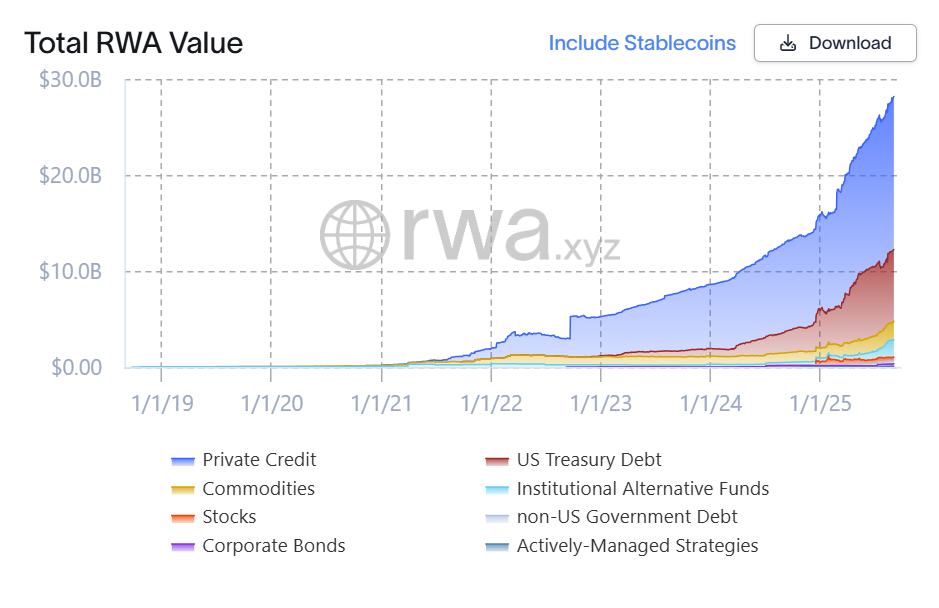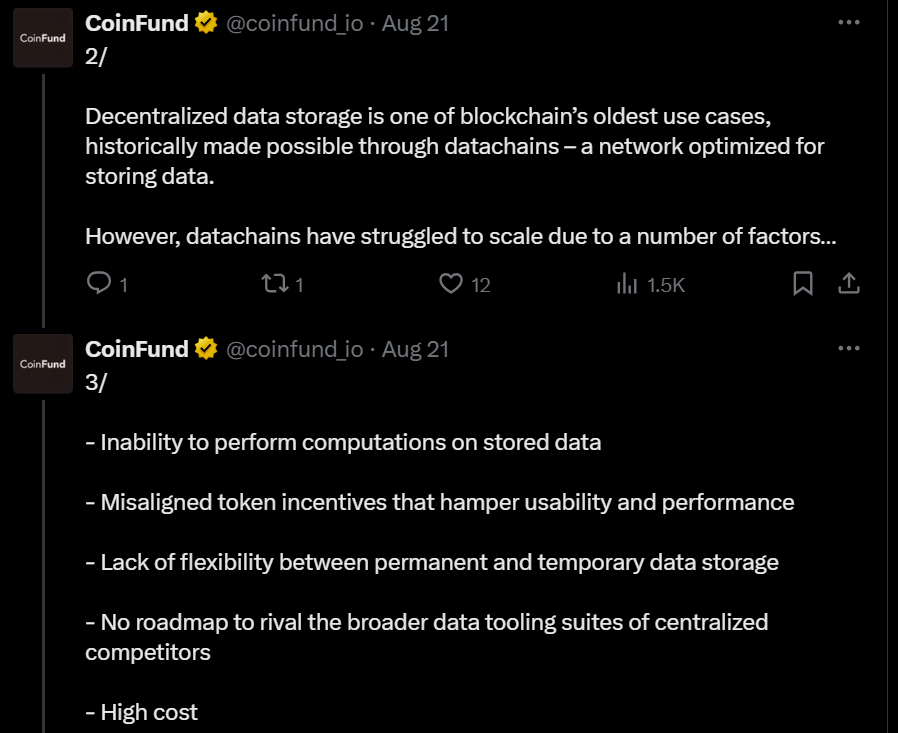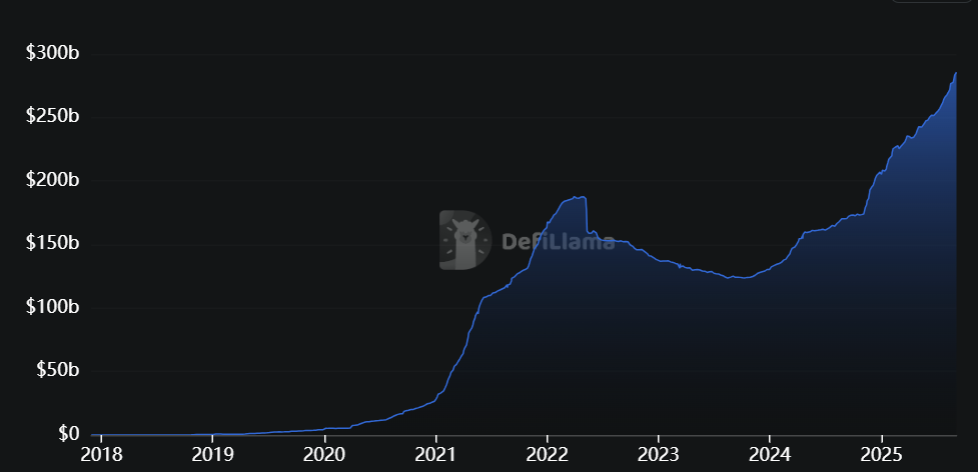Tokenization Could Fuel Stablecoin Infrastructure and On-Chain Energy Credit Markets, VCs Back Startups
STX
STX/USDT
$29,361,951.62
$0.3825 / $0.3576
Change: $0.0249 (6.96%)
+0.0056%
Longs pay
Contents
RWA tokenization is attracting major VC capital in 2025 as firms fund platforms that bring energy, credit and treasury assets onchain, expanding stablecoin rails and creating new institutional-grade credit markets for onchain yield and lending.
-
VCs are prioritizing real‑world asset tokenization to unlock new yield and institutional onchain liquidity.
-
Energy assets, programmable credit and stablecoin infrastructure led recent seed and Series A rounds.
-
Onchain asset value rose to $28 billion in 2025 from $15 billion earlier in the year, signaling rapid adoption.
Tokenization surge: RWA tokenization draws VC funding to energy, credit and stablecoin infrastructure—read the latest rounds, market data and strategic takeaways.
What is driving RWA tokenization growth in 2025?
Real‑world asset tokenization is accelerating as venture capital targets platforms that convert physical and financial assets into tradable onchain tokens. Institutional interest, demand for alternative yield and growth in stablecoin ecosystems are front-loading capital into tokenization infrastructure and programmable credit.
How are venture firms supporting tokenization infrastructure?
Leading firms and ecosystem players have launched accelerator programs and funded startups focused on custody, compliance, datachains and credit plumbing. The trend centers on enabling verifiable cash flows, regulatory-compliant fundraising and secure stablecoin rails to support institutional participation.
Tokenization surges as VCs back startups bringing energy assets onchain, establishing new credit markets and expanding stablecoin infrastructure.
Real‑world asset (RWA) tokenization has emerged as a primary focus for venture investors, who see the combination of institutional blockchain adoption and the search for diversified yield as a durable growth vector.
In 2025 the onchain asset total has climbed to roughly $28 billion from $15 billion earlier in the year, reflecting fast capital inflows and expanding use cases beyond private credit and treasuries to include equities and energy infrastructure.

The RWA sector has grown rapidly over the past two years. Source: RWA.xyz
Why are energy assets becoming a tokenization focus?
Energy infrastructure—solar, storage and data centers—offers predictable cash flows and long-term contracts that map well to tokenized securities. Startups are packaging micro‑shares of projects to provide retail and institutional investors access to yield tied to energy revenues.
What recent funding rounds highlight this shift?
Plural closed a $7.13 million seed round to onboard energy assets onchain, led by Paradigm with participation from Maven 11, Neoclassic Capital and Volt Capital. The round underscores investor conviction that tokenized energy plays a role as AI and data center demand expands.
How are datachains and programmable credit evolving?
Irys raised $10 million to build a layer‑1 blockchain optimized for data‑heavy applications, enabling large datasets to be stored cheaply and turned into programmable economic assets. Credit Coop raised $4.5 million to connect lenders to verifiable business cash flows and onchain loan markets.

Source: CoinFund
Credit Coop reports it has processed more than $150 million in volume, with $8.5 million in active loans outstanding—evidence that programmable credit is moving beyond proofs of concept into productive deployments.
When are stablecoin infrastructure providers getting funded?
Stablecoin rails are receiving heavy investment as transaction volumes and integration demand rise. Utila raised $22 million in a Series A extension to expand custody, wallet and compliance solutions that help businesses operate with stablecoins.

Stablecoin market capitalization has exceeded $285 billion. Source: DefiLlama
Utila reports processing more than $60 billion in transactions, highlighting the scale at which stablecoin operations now run and why enterprises require robust infrastructure stacks.
What other notable raises show market breadth?
Yellow Network completed a Reg D token sale raising over $1 million to develop cross‑chain trading infrastructure, backed by industry founders. These raises indicate investor appetite for regulated, institution‑oriented infrastructure across custody, trading and compliance layers.
Frequently Asked Questions
How much has the onchain RWA market grown in 2025?
Onchain real‑world assets grew to approximately $28 billion in 2025 from $15 billion earlier in the year, driven by tokenized credit, treasuries and expanding energy and equity tokenization activity.
Can energy projects be tokenized safely?
Yes. Tokenized energy projects combine onchain ownership records with off‑chain legal frameworks and verified cash flows to create tradable instruments, though robust custody and compliance remain essential.
Are these token sales regulatory compliant?
Many recent raises used accredited investor channels and Reg D structures; firms emphasize compliance and regulated frameworks to attract institutional capital.
Key Takeaways
- Capital Focus: VCs are prioritizing RWA tokenization for access to new yield pools.
- Use Cases: Energy, programmable credit and stablecoin infrastructure lead current funding activity.
- Market Signal: Onchain asset totals near $28B in 2025, reflecting rapid adoption and growing institutional participation.
Conclusion
Tokenization is shifting from niche experiments to institutional infrastructure. With venture capital backing platforms for energy, datachains, programmable credit and stablecoin operations, the onchain RWA ecosystem is poised for further growth. Expect more regulated offerings and enterprise integrations in the coming quarters; follow COINOTAG for ongoing coverage and data-driven reporting.
Jocelyn Blake
Comments
Yorumlar
Other Articles
Shenzhen’s Five-Year AI Plan Could Position City as Key Player in China-US Tech Race
December 30, 2025 at 03:43 PM UTC
SEI Consolidates Near $0.10 Support as TVL Recovers, Downside Risk Looms
December 30, 2025 at 04:16 AM UTC
Bitcoin Price Holds Near $87,500 Amid Fed’s $2.5B Liquidity, Breakout Possible
December 30, 2025 at 02:16 AM UTC
